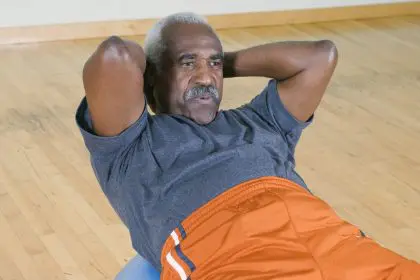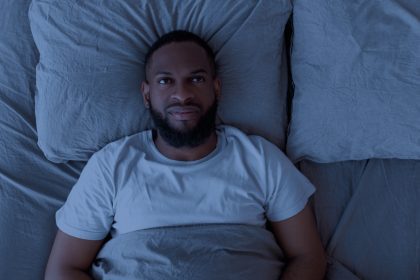Stretch marks have long been associated with women, creating a societal perception that largely excludes men from this conversation. Yet, the truth remains: stretch marks don’t discriminate based on gender. While they might not be as openly discussed in men’s health dialogues, these marks can be an unwelcome reality for men, challenging the misconceptions and gender stereotypes that have overshadowed their existence.
In the landscape of wellness and body image, men encounter their own set of challenges, often silently grappling with concerns that society deems incongruent with traditional masculinity. Stretch marks are a prime example of such a challenge—commonly dismissed as a “women’s issue,” their presence on men’s skin is frequently overlooked or downplayed.
Contrary to popular belief, men experience stretch marks for various reasons, mirroring some but differing significantly from those affecting women. These marks can emerge due to rapid muscle gain, intense workouts, fluctuations in weight or even growth spurts during adolescence. While the causes might differ, the impact on men’s physical and mental well-being can be equally profound.
The lack of discourse around stretch marks in men perpetuates a damaging narrative, one that inadvertently dismisses their concerns and undermines the importance of inclusive health discussions. Breaking through this silence is vital in providing holistic care and support for individuals of all genders.
Understanding why men should be concerned with stretch marks goes beyond skin-deep; it’s about validating experiences, promoting inclusivity and fostering a more empathetic society that embraces the diverse realities of body image challenges.
Stretch marks, medically termed “striae,” are a result of rapid skin stretching, causing the deeper layers of the skin to tear. These marks often appear as streaks or lines, commonly found on areas where the skin has stretched rapidly, such as the abdomen, thighs, upper arms or even the back.
Although the reasons behind stretch marks in men might differ from those in women, the impact remains significant. Men commonly encounter stretch marks due to rapid weight gain or loss, intense muscle-building workouts or even growth spurts during adolescence.
One significant cause of stretch marks in men is rapid muscle gain. Bodybuilders and fitness enthusiasts who undergo intensive strength training may experience these marks as their muscles grow at a rapid pace. Despite the admiration for a sculpted physique, these marks can be an unexpected side effect, often leading to concerns about body image and self-esteem.
Moreover, fluctuations in weight— particularly rapid weight gain — can also contribute to the development of stretch marks in men. Lifestyle changes, such as sudden increases in body mass or obesity, can cause the skin to stretch beyond its limits, resulting in these visible marks.
The psychological impact of stretch marks on men is often overlooked. Society’s perception of these marks as primarily a “female issue” can lead to feelings of embarrassment, self-consciousness and even body dysmorphia in men. Addressing this misconception is crucial in promoting body positivity and encouraging men to seek support and treatment without stigma.
Fortunately, various treatments and preventive measures are available for managing stretch marks. Moisturizing the skin regularly — especially during periods of rapid growth or weight change — can help improve skin elasticity and reduce the likelihood of developing stretch marks. Additionally, certain topical creams and oils containing ingredients like retinoids, hyaluronic acid or vitamin E may aid in minimizing the appearance of existing marks.
For those seeking more intensive treatments, procedures like laser therapy, microdermabrasion or microneedling can effectively reduce the visibility of stretch marks. Consulting with a dermatologist or skin care professional can provide tailored solutions based on individual needs and preferences.
In conclusion, the misconception that stretch marks are exclusively a concern for women is outdated and inaccurate. Men, too, can experience these marks due to various factors — and acknowledging this reality is essential for holistic healthcare and body positivity.
It’s crucial to foster an environment where men feel comfortable addressing their concerns about stretch marks without fear of judgment. By promoting awareness, offering support and embracing diverse body types, we can break the stigma surrounding stretch marks and empower individuals — regardless of gender — to embrace their bodies with confidence and pride.
This story was created using AI technology.
















